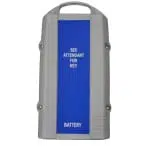Guidelines for Maintaining Your Pool Lift
December 4, 2015
A pool lift is an important piece of equipment for pools and spas to meet ADA regulations. A pool lift requires care and maintenance in order to continue operating properly. Pool lifts will last for years as long as they are well-maintained, cleaned, and checked for functionality on a regular basis. To ensure the structural integrity, safety, and operation of your pool lift, here are some pool lift maintenance guidelines to follow:
Winter Storage
To guarantee that your pool lift is safe from the elements of winter, you should consider an option for winter storage. If you choose to leave a pool lift outside during the winter, it’s subject to damage from the cold, wind, and snow. Extreme temperatures will gradually decrease the functionality of your pool lift’s hardware and even damage the pool lift battery life. If you have a shed, consider storing the lift inside for the winter. At the very least, use a pool lift cover to protect your pool lift.
Storage in general during any season is beneficial for your pool lift in order to keep it out of the rain, hail, and strong winds.
Charge the Battery Daily
You should charge the pool lift battery on a regular basis, and daily charging is most advantageous. This not only eases the use for the next person to use the pool lift, but it also makes sure that the battery is fully operational. If a pool lift battery discharges completely, it will damage the battery.
Before anyone uses the lift, someone should always check the level of the pool lift battery. Additionally, having a backup battery is critical in the event it ever fails or stops working altogether.
To ensure that there is always a charged battery and to avoid damage, it’s best to swap batteries every day, while always having the backup charging.
Clean Regularly
Use only fresh water to rinse your pool lift, not your pool water. Non-chlorinated water does not contain chemicals that could buildup on your lift. If proper cleaning is not conducted weekly, chlorides and other chemicals from the pool could lead to long-term corrosion. Your pool lift may require more frequent cleanings depending on where it is installed and what type of environment you live in.
You should clean the pool lift’s external components daily with fresh water, and clean the pool lift’s surface weekly with mild, non-abrasive soap and water.
Frequently Test Lift for Full Operation
People use pool lifts every day, so pool lifts that are in a public pool area should be tested daily to make sure it is safe and still functioning properly. Even if a lift does not have regular use, a test is needed at least once a week. Idle equipment can eventually decrease in operation performance. A weekly test not only ensures full operation of the lift, but also allows the pool lift to operate if left idle for too long.
Inspect that Hardware is Secure
Lastly, someone should inspect the lift weekly, or even daily depending on the frequency of use. If the pool lift is at a public pool, inspect it daily for loose or broken hardware, battery level, and overall function. If you have a home pool lift, daily or weekly inspections are recommended. Additionally, an overall monthly inspection should be conducted to make sure the lift has no corrosion or damage. Corrosion left undetected will affect the structural integrity of your pool lift.


